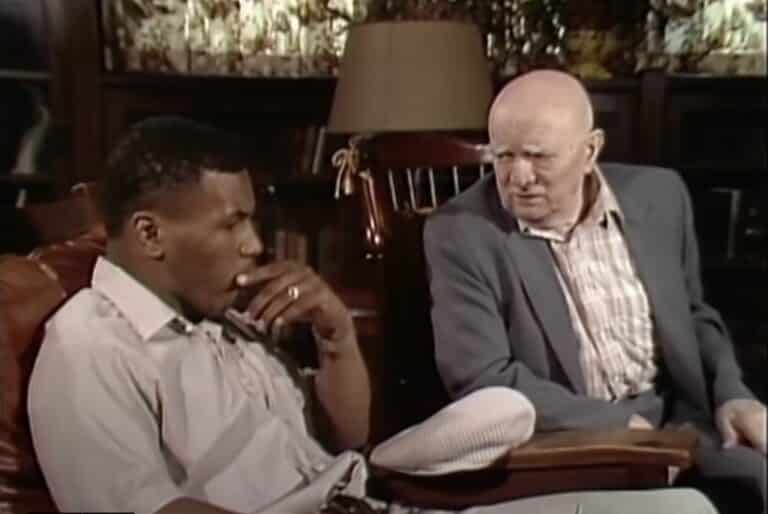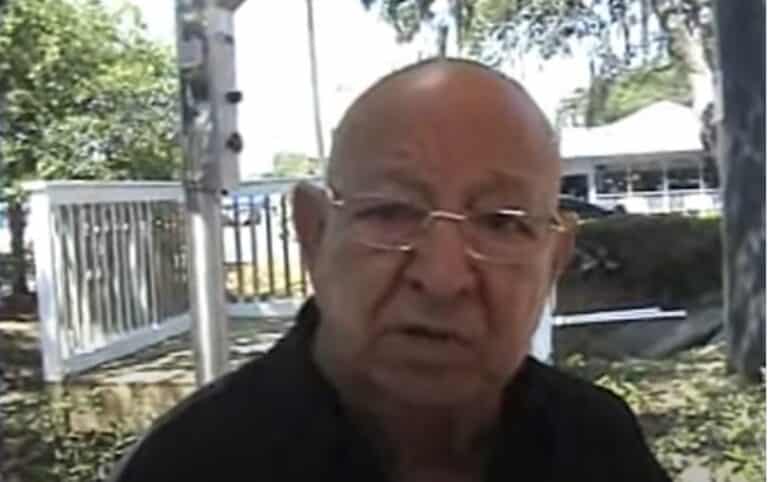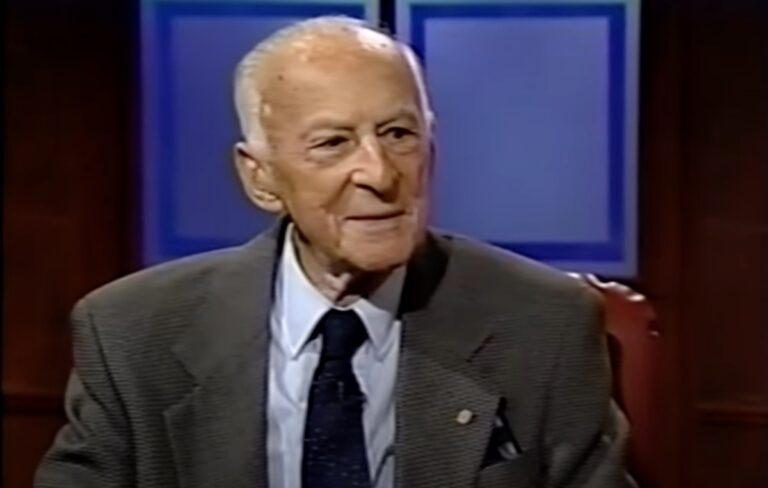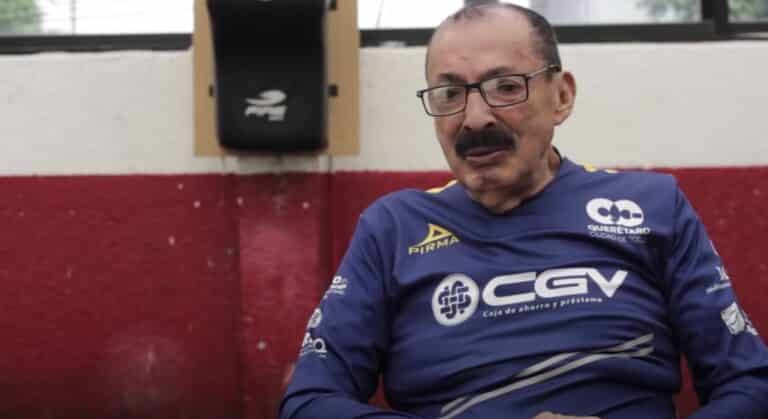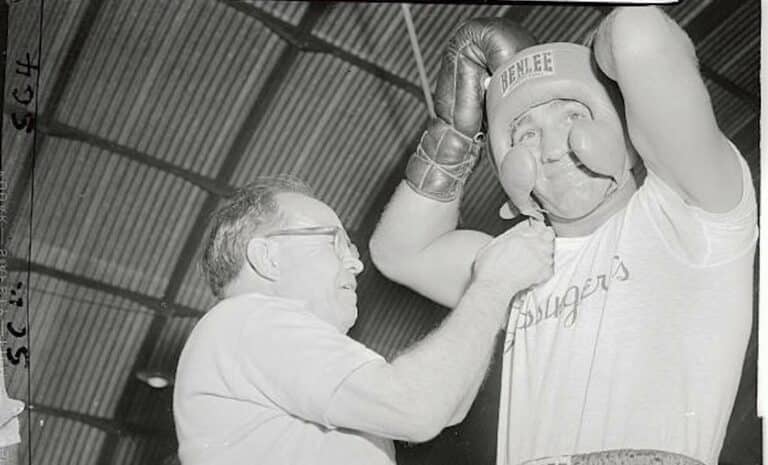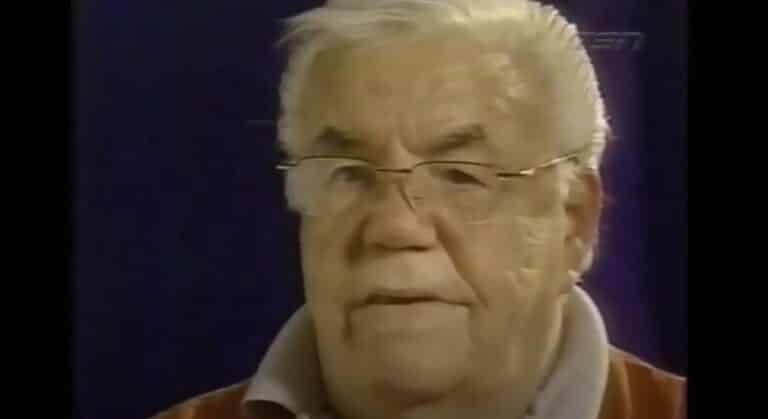Eddie Futch – Boxing Coach Biography
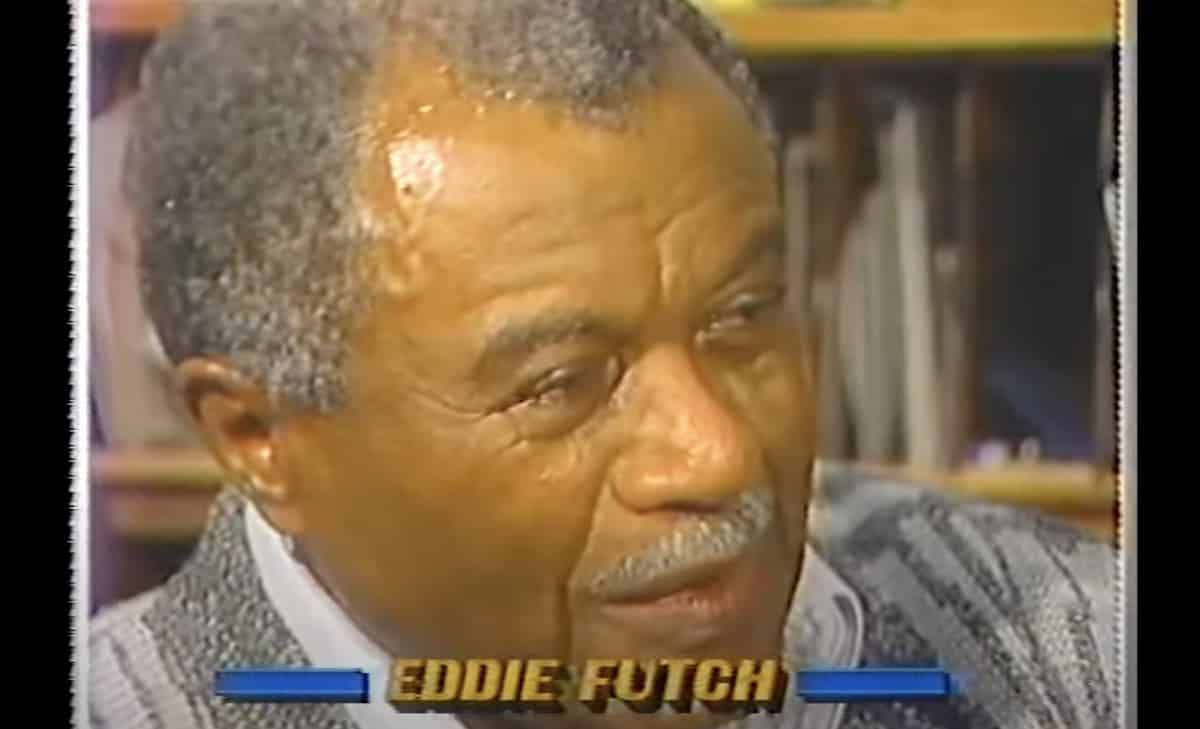
| Date of Birth: | August 9, 1911 |
| Died: | October 10, 2001 |
| Place of Birth: | Hillsboro, Mississippi |
| Gym: | Brewster Recreation Center Gym |
| Location: | Detroit, Michigan |
| Boxing Background: | Was 37-3 as an amateur lightweight, winning the 1933 Detroit Athletic Association championship and the 1935 Detroit Golden Gloves championship |
| Notable Fighters: | Joe Frazier, Ken Norton, Larry Holmes, Michael Spinks, Alexis Arguello |
Eddie Futch’s Boxing Background
When it comes to shortlisting the greatest boxing trainers of all time, the name Eddie Futch invariably comes up, alongside Angelo Dundee, Cus D’Amato, Jack Blackburn, Ray Arcel and Emanuel Steward. What all of these men had in common was they weren’t just great trainers, they were also great thinkers and innovators, and between them they shaped the way boxing is still taught to this day.
Futch was born in Hillsboro, Mississippi, but moved with his family to the city of Detroit when he was five years old. Right from the start, Futch was both very athletic and very smart. This enabled him to become a star semipro basketball player despite his diminutive size. Futch began hanging out at Detroit’s famous Brewster Recreation Center, and it was there he discovered the boxing gym and soon fell in love with the sport.
In the early 1930s, future heavyweight champion Joe Louis was just an amateur light heavyweight but was already causing a stir in Detroit. Despite only being a lightweight himself, Futch became Louis’ chief sparring partner, because as Joe himself would later say, “When I could catch Eddie with anything I knew I was sharp.” Even at that stage of his life, Futch was giving Louis – and other fighters in the gym – tips and pointers on improving their ring performances.
After compiling a 37-3 amateur record, Futch was set to turn pro in 1936, but during his medical the doctor discovered he had a heart murmur, and he was refused a license.
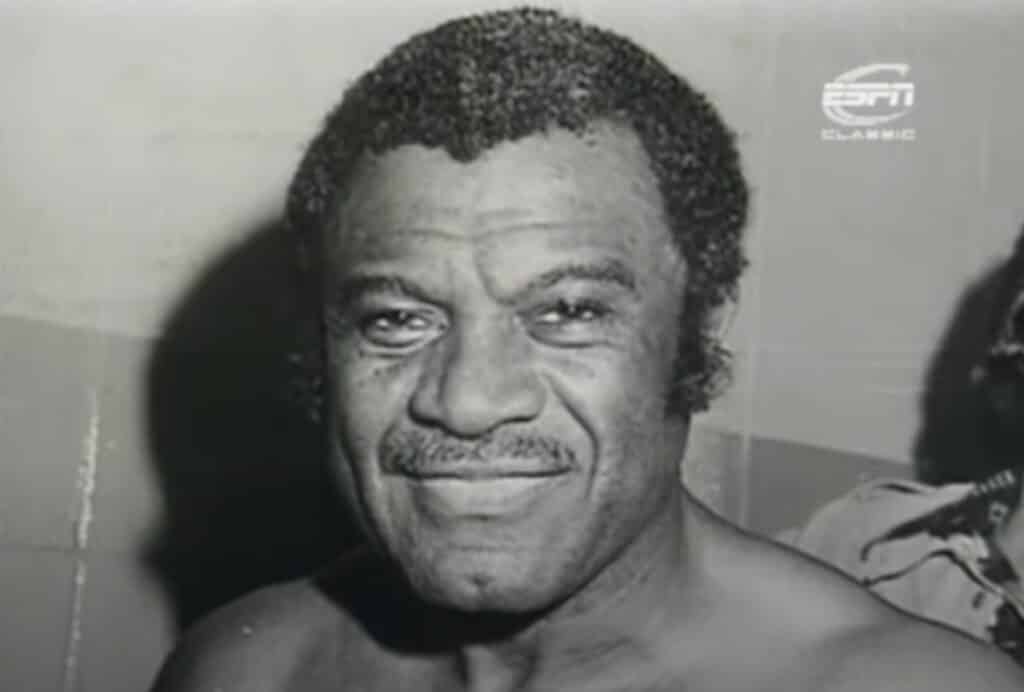
Eddie Futch Becomes a Trainer
In 1936 Eddie Futch was just 25 years old. A highly decorated star amateur in Detroit, he had been set to turn professional but a heart murmur ended his dreams of making a living from his skill in the ring. However, by now boxing was very much in his blood, and he had already begun coaching some of the young amateurs at the Brewster Recreation Center. Futch made the transition from fighter to full-time trainer effortlessly.
With America in the throes of the Great Depression, there were literally thousands of hungry young men turning to boxing to try and eke out an existence. Competition was intense, and it took Futch until the 1940s before he trained his first top 10 contender – middleweight Jimmy Edgar. Under the guidance of Futch, Edgar would finish with a 36-5-1 record and was never stopped. Edgar had three fights with future middleweight king Jake LaMotta, including losing a split decision in the second and drawing the third.
Futch would have to wait until he was well into his 40s before one of his fighters became world champion: In 1958 Don Jordan defeated Virgil Atkins to win the world welterweight title.
Joe Frazier
In 1964, Joe Frazier won the heavyweight gold medal at the Tokyo Olympics, despite standing 5’11” and weighing barely 200 lbs. What made Frazier such a fearsome opponent even back then was his speed, relentless pressure and a devastating left hook which enabled him to leave the amateur ranks with a 38-2 record, including 37 KOs. Frazier was trained by another great coach in Yancey “Yank” Durham, and Durham asked Eddie Futch if he would become his chief second.
Just as Cus D’Amato would some 15 years later with a teenage Mike Tyson, Futch knew that being a short heavyweight needn’t be a hindrance, and could even be a benefit. It was Futch who encouraged Frazier to make the most of his short stature, getting him to fight out of a crouch, come in low, bobbing and weaving, throwing vicious hooks to his opponent’s body. Soon enough, his opponent would be forced to lower his guard, and that’s when “Smokin’ Joe” would come over the top with one of his lethal left hooks, often ending the fight.
With Durham and Futch in his corner, Frazier tore through the heavyweight division (Muhammad Ali was now in enforced exile) and in 1970 he knocked out Jimmy Ellis in four rounds to unify the WBC and WBA titles. In late 1970 Ali regained his boxing license and returned to action with wins over Jerry Quarry and Oscar Bonavena, setting up what would become known to this day as the “Fight of the Century”.
The “Fight of the Century”
It was Futch who put together the strategy that would lead to Joe Frazier’s victory over Muhammad Ali at New York’s Madison Square Garden in March 1971 – arguably the greatest victory in the history of boxing. Both Frazier and Ali were undefeated and both had strong claims to being heavyweight champion of the world. Going into the 15th round the fight was close, but it was Frazier who came up with the left hook which floored Ali and earned him the unanimous decision.
Futch told Frazier to focus purely on Ali’s body early in the fight, and those tactics proved spot on. By the ninth round those punches had taken their toll, and Ali was spending more and time pinned to the ropes, with Frazier switching his attack to the head and catching Ali time and again with booming left hooks. Both fighters finished the bout displaying the effects of their epic encounter, Ali with a huge swelling of the right side of his face, while Frazier’s face was a swollen mess, thanks largely to Ali’s jab.
Ken Norton
Eddie Futch trained another fighter who gave Ali nightmares in Ken Norton. In fact, whereas Ali clearly decisioned Frazier in their second fight 1974, and stopped Joe after 14 rounds in the “Thrilla in Manila” in 1975, a case can be made that Norton won all three of his fights with Ali.
Futch was the mastermind behind Norton’s shock victory over Ali in 1973. Literally nobody saw this coming: Ken Norton was the same height as Ali at 6’3” but he was extremely muscular for a heavyweight especially for that time, and his handsome looks had earned him a part in the Hollywood movie Mandingo. Although Norton was a top-ten contender with a 29-1 slate, there were no big names on his record, and the general consensus was that Ali would toy with him.
Futch whipped Norton into incredible shape in order to keep the pressure on Ali for the full 12 rounds, and implored him to pump out his jab at exactly the same time as Ali threw his, effectively taking away Ali’s favorite punch. Unusually for a tall man, Norton favored fighting out of a crouch, and Futch had him use his style to great effect as he relentlessly attacked Ali’s body.
At some point in the contest, a left hook from Norton broke Ali’s jaw, however the “Greatest” fought on regardless, going on to lose via a split decision. It was only the second defeat of Ali’s career. Ali and Norton fought an immediate rematch in 1973, and again in 1976, and while Ali would win both, on each occasion Norton gave Ali absolute hell.
Riddick Bowe
The last great fighter to be guided to a world title by Eddie Futch was Riddick Bowe. Unlike Ali and Norton, Futch trained Bowe from his pro debut onward. At 6’5”, the supremely gifted Bowe’s optimum fighting weight was around 230 lbs, but he rarely kept his weight that low. Bowe had been the superheavyweight silver medalist at the 1988 Olympics, losing in the final to Canada’s adopted Brit Lennox Lewis.
As a young professional, Bowe ripped impressively through the heavyweight ranks in a similar fashion as another Brooklyn native Mike Tyson had a few years earlier. Turning pro in 1989, Bowe fought 13 times in his first year and by the time he challenged champion Evander Holyfield in 1992, Bowe was 31-0. In one of the greatest heavyweight fights ever seen, both fighters rocked each other repeatedly before Bowe won a unanimous 12 round decision.
Unlike Frazier and Norton, Bowe hated training, and while he would prove time and again that he was as brave as they came and had the heart of a lion, his lack of discipline would cost him dearly. Bowe was surprisingly beaten by Holyfield in a rematch the following year, and while that would remain his only career defeat, Bowe would never regain the genuine heavyweight title again.
In a 1996 fight against the fearsome, unbeaten Polish heavyweight Andrew Golota, Bowe had been floored twice and was taking a terrible beating when Golota was disqualified in the 7th round for repeatedly hitting Bowe low. However, Futch saw in that fight that even though Bowe was only 29, he was already in mental and physical decline and may even have been showing signs of the dementia pugilistica he suffers from today. Futch advised Bowe to retire, and stepped down as his trainer.
Eddie Futch retired from training fighters two years later in 1998, and he passed away in 2001 aged 90.
Awards
Eddie Futch achieved many prestigious awards during his lifetime, including:
(All from the Boxing Writers Association of America)
- Manager of the Year (1975)
- Long and Meritorious Service (1982)
- Trainer of the Year (1991, 1992)
Futch was inducted into the International Boxing Hall of Fame in 1994
In 1997 Futch was named “The Best Trainer of the last 75 Years” at the 75th Anniversary of The Ring magazine.
Other Fighters Futch Trained
Eddie Futch played a part in the careers of literally dozens of fighter during his long career as a coach. Here are just some of them:
Alexis Arguello, Trevor Berbick, Maurice Blocker, Duane Bobick, Marvin Camel, Bobby Chacon, Bruce Curry, Patrick Ford, Bob Foster, Montell Griffin, Leroy Haley, Virgil Hill, Larry Holmes, Eddie Jones, Don Jordan, James Kinchen, Hedgemon Lewis, Tony Licata, Mike McCallum, Wayne McCullough, Willie Monroe, Walter Moore, Mike Quarry, Mando Ramos, Freddie Roach, James Shuler, Ernie Singletary, Michael Spinks, Marlon Starling, Alex Stewart and Johnny Tapia
Eddie Futch’s Top Ten Best Fighters
In an interview with Sports Illustrated in 1991, Eddie Futch was asked to list in order the ten best fighters he had trained. Below is that list, complete with comments he made about each fighter:
- Joe Frazier: “The greatest heart of all, he fought from bell to bell. Every trainer should have one Joe Frazier in his life.”
- Michael Spinks: “Unorthodox, but he could adapt perfectly to any opponent.”
- Mike McCallum: “A thinking fighter who tears you up downstairs, then pulls your teeth.”
- Larry Holmes: “He learned from his mistakes, and he was always in great condition.”
- Alexis Arguello: “All the tools in the world. You could put him on course, and he stayed on it.”
- Don Jordan: “My first champ, in 1958, he was an excellent boxer who never reached his potential.”
- Hedgemon Lewis: “A boxing master. When he sparred, other fighters would come to watch.”
- Maurice Blocker: “Tall and skinny, he doesn’t look the part, but he finds a way.”
- Marlon Starling: “He moves so well, and when he’s on, he controls everything in the ring.”
- Bob Foster: “Such range and strength. He could move and box, but, my, what a punch.”

